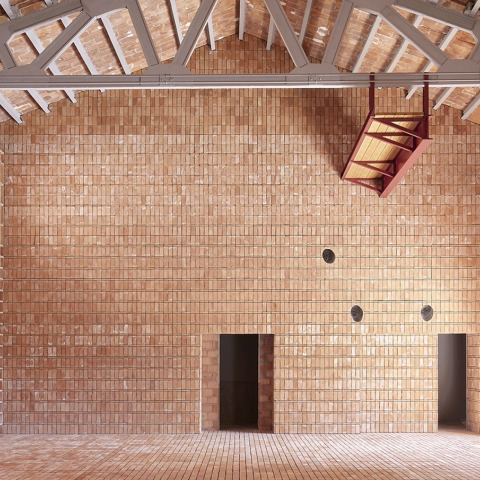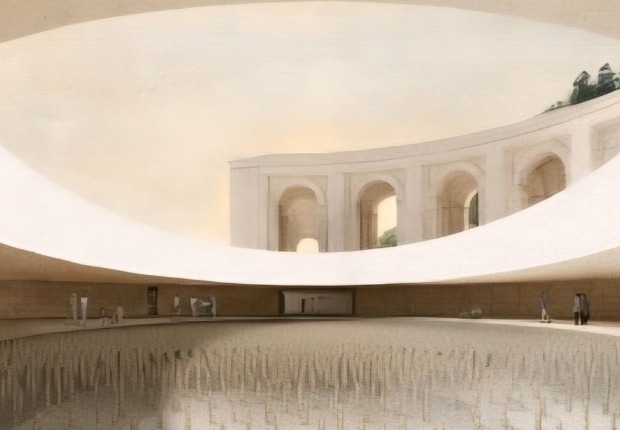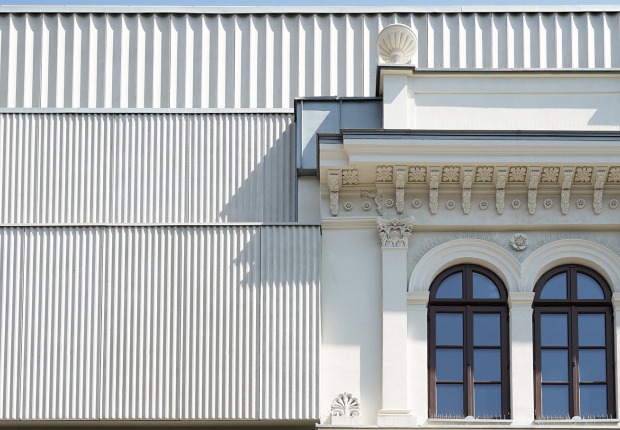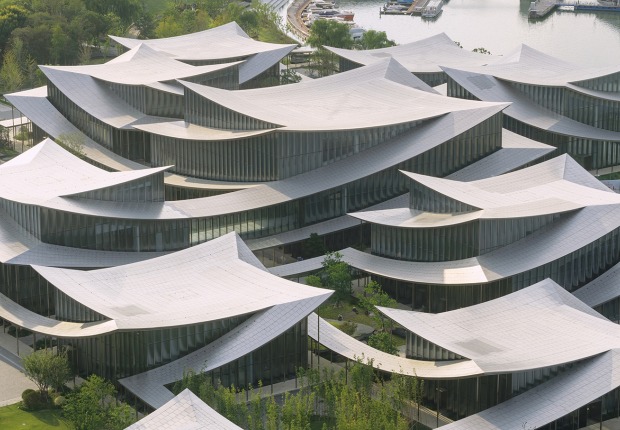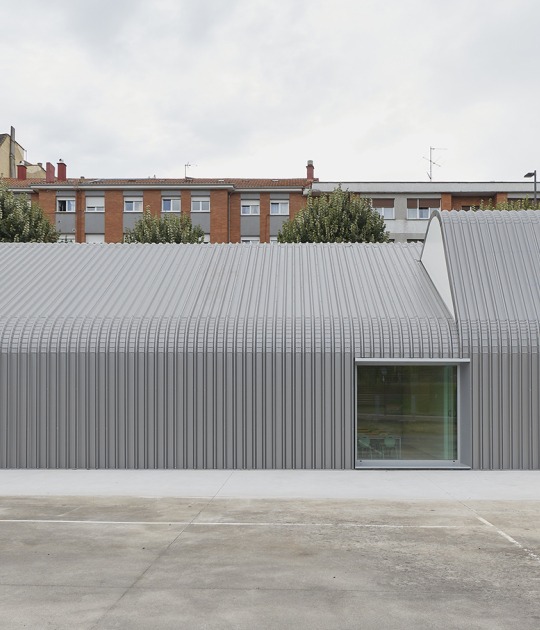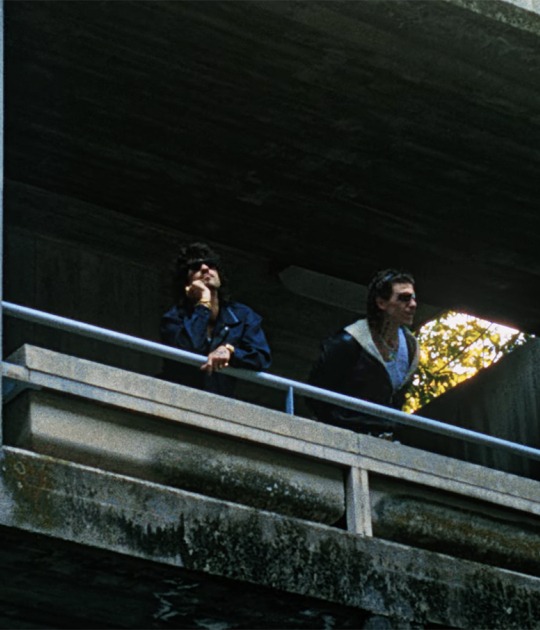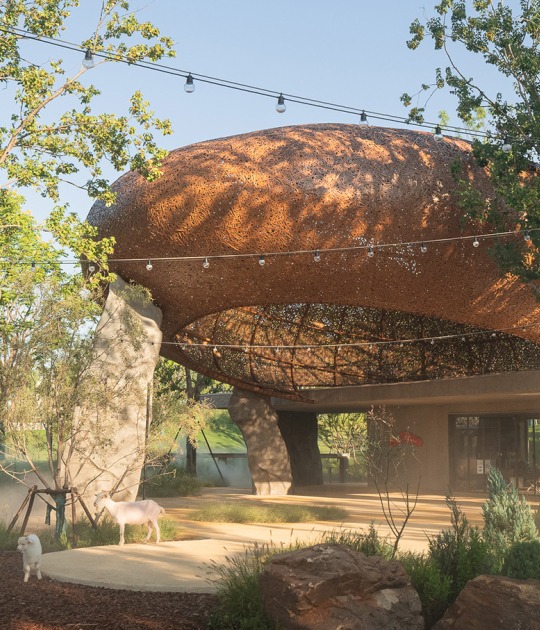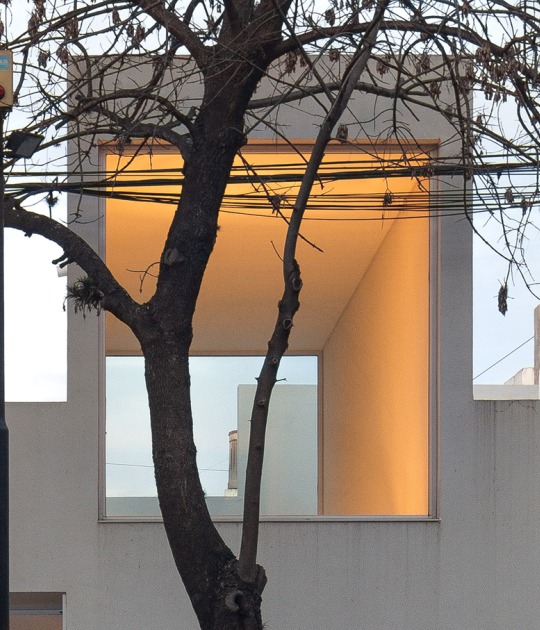The Cultural Center has a distribution in which the programmatic elements of the changing rooms are located under the original rehabilitated cisterns and whose set of public services are located outside the scope of the nave, thus freeing up the main room to host different events and uses in a high-rise open space. The project has been selected for the FAD 2024 awards.

Rehabilitation of the agricultural coopertive for multipurpose and cultural space by Camps Felip Arquitecturia. Photograph by José Hevia.
Project description by Camps Felip Arquitecturia
The new Cultural Center is located in a historical environment that is part of the Flix agricultural cooperative complex. The new space contributes to the recovery and enhancement of the historical and social characteristics and elements of the building.
The basic interventions to allow the use of the new center are: foundation and ground stability, structural consolidation and comfort of the interior spaces.
The original character of this heritage building is deeply related to its typology: a typology based on the vacuum of the nave and the connection of the naves in the whole.

Rehabilitation of the agricultural coopertive for multipurpose and cultural space by Camps Felip Arquitecturia. Photograph by José Hevia.
Inside the nave, its typological structure is preserved and is conditioned to ensure maximum comfort. A ceramic finish and ceramic traces are proposed to improve the acoustic behaviour of the enclosure and unify the empty space and enhance it. A double-skin system is proposed in the vertical facings that allow the installation of the enclosure to be installed in order and hidden so that they do not distort the original and empty appearance of the nave.
The rehabilitation proposal aims to rehabilitate the envelope of the warehouse without modifying its original industrial appearance, increasing the thermal insulation of the roof and facade. The most valuable construction and architectural elements that characterize the typology of the original building are preserved, such as: the grape wood hopper, storage cisterns of the outer dividing wall, the openings and walkway the oil hopper and the roof belts.
Just as the facade is configured with a single material, its interior is also made up of a modulation thanks to two unique pieces of ceramics, reinforcing the unique character of the empty space of the central nave. This repeated piece is adapted as a pavement or self-supporting element.

Rehabilitation of the agricultural coopertive for multipurpose and cultural space by Camps Felip Arquitecturia. Photograph by José Hevia.
The main access from Joan Maragall street is preserved, and access is proposed exclusively for maintenance to the technical room from Major street.
There is a third exit on the ground floor oriented towards the outer space.
The programmatic elements of changing rooms are located under the refurbished cisterns and the set of public services of bar and bathrooms are located outside the scope of the nave inside the adjacent nave, under the current first-silver consultations. With this distribution of the program, the main hall of the nave is released, which can host different acts and uses in an open rectangular space of high height.
